Design After Covid-19: What Are Our New Needs?
As homes become refuges, we're questioning what we need from our interiors. Maison & Objet 2020 had some answers
Houzz France
29 September 2020
Our needs are tied to our emotions, which are themselves influenced by our surroundings. The pandemic we are living through has intensified certain emotions and shaken up our priorities. Jaye Anna Mize, vice-president of home interiors at Fashion Snoops; and Carrera Kurnik, editor-in-chief of consumer culture and strategy at the same trends agency; along with Charlotte Delobelle, who heads up the trend agency’s Paris office, have identified pairs of emotions that have defined our responses to the crisis and driven our new needs. They are anxiety and gratitude, isolation and inspiration, fear and empathy, confusion and clarity.
These professionals presented their analysis in a seminar entitled ‘Information & Intuition: Anticipating the New Needs of Consumers after COVID-19’ at the 2020 Maison & Objet digital fair, which replaced the physical event in France this September. Relying on extensive data on everything from news articles to keywords, hashtags, searches and product sales, the speakers identified how these emotional needs are translating into new demands on our interiors and how good design can help address these new challenges.
A modular interior
Home is not just home any more. With the pandemic and lockdown, it has turned into an office, a school, a gym, a play area, a restaurant, a dormitory or a place to retreat and relax. Today we therefore need more flexibility in our interiors, with modular and adaptable elements. “This pandemic has really caused consumers to look deep at their needs … and with that we’ve really prioritised items that are more adaptable for all situations,” says Mize.
We are starting to look for furniture and accessories that allow us to work and play in the same space. Hybrid designs, detachable units, or convertible pieces are the key to creating a home suited to the ‘new normal’.
Home is not just home any more. With the pandemic and lockdown, it has turned into an office, a school, a gym, a play area, a restaurant, a dormitory or a place to retreat and relax. Today we therefore need more flexibility in our interiors, with modular and adaptable elements. “This pandemic has really caused consumers to look deep at their needs … and with that we’ve really prioritised items that are more adaptable for all situations,” says Mize.
We are starting to look for furniture and accessories that allow us to work and play in the same space. Hybrid designs, detachable units, or convertible pieces are the key to creating a home suited to the ‘new normal’.
A healthy interior
Before Covid-19 there was already a growing awareness of the importance of healthy air, but today this has really become a priority as we spend more and more time at home. In the middle of the pandemic, homeowners are looking for all possible means to improve indoor air quality: furniture that doesn’t emit VOCs or other pollutants, sensors that monitor air quality and air-purifying treatments.
“Ikea, right when the pandemic hit … came out with protective, purifying curtains that actually purify your home like a filtration system,” says Mize. “We’re really seeing a lot of filtration systems built like ecosystems, bringing the outdoors indoors.” This also applies to the filtration of the water we drink and bathe with.
Connect, network with and follow the work of other design professionals
Before Covid-19 there was already a growing awareness of the importance of healthy air, but today this has really become a priority as we spend more and more time at home. In the middle of the pandemic, homeowners are looking for all possible means to improve indoor air quality: furniture that doesn’t emit VOCs or other pollutants, sensors that monitor air quality and air-purifying treatments.
“Ikea, right when the pandemic hit … came out with protective, purifying curtains that actually purify your home like a filtration system,” says Mize. “We’re really seeing a lot of filtration systems built like ecosystems, bringing the outdoors indoors.” This also applies to the filtration of the water we drink and bathe with.
Connect, network with and follow the work of other design professionals
A hygienic interior
Hygiene in interiors is another big topic. “At home, many of us have really re-evaluated our normal routines to be more sanitary overall … disinfection is in high demand, so this is one of the biggest areas we’re seeing innovation in,” says Mize.
This encompasses solutions for disinfecting clothing from the moment it enters the home or is hung up in disinfecting wardrobes, anti-bacterial products and fabrics for children or bedding, soaps that change colour when you’ve washed your hands long enough, or self-disinfecting features such as door handles.
To respond to newly growing hygiene needs, there is also a new emphasis on contactless solutions that stop germs from multiplying on certain surfaces or limit their proliferation in the home.
Hygiene in interiors is another big topic. “At home, many of us have really re-evaluated our normal routines to be more sanitary overall … disinfection is in high demand, so this is one of the biggest areas we’re seeing innovation in,” says Mize.
This encompasses solutions for disinfecting clothing from the moment it enters the home or is hung up in disinfecting wardrobes, anti-bacterial products and fabrics for children or bedding, soaps that change colour when you’ve washed your hands long enough, or self-disinfecting features such as door handles.
To respond to newly growing hygiene needs, there is also a new emphasis on contactless solutions that stop germs from multiplying on certain surfaces or limit their proliferation in the home.
A restful interior
In times of pandemic, our homes have also become our refuges. And what would a refuge be if not a place to rest and recharge your batteries? “We are without a doubt in a comfort movement,” says Mize.
She underscores the priority given to sleep and therefore to bedroom decor. Responding to this need are products that ensure high quality sleep, helping us process our daily emotions and protecting our immune systems: this includes sleep and breathing monitors, anti-bacterial bed linens, or everything that has to do with bedroom sound insulation. “People are looking for more features within their everyday sleeping situations,” says Mize.
Browse more beautiful contemporary bedroom designs
In times of pandemic, our homes have also become our refuges. And what would a refuge be if not a place to rest and recharge your batteries? “We are without a doubt in a comfort movement,” says Mize.
She underscores the priority given to sleep and therefore to bedroom decor. Responding to this need are products that ensure high quality sleep, helping us process our daily emotions and protecting our immune systems: this includes sleep and breathing monitors, anti-bacterial bed linens, or everything that has to do with bedroom sound insulation. “People are looking for more features within their everyday sleeping situations,” says Mize.
Browse more beautiful contemporary bedroom designs
An interior for wellness
Beyond rest, it is wellness more generally that prevails in this time of anxiety. The experts also observed that we are using the time to focus on ourselves, whether mentally, physically or emotionally. “Overall culture is shifting to really value healing and wellbeing over … excessive displays of wealth,” says Kurnik.
The growing interest in meditation apps is one of the manifestations of this phenomenon. Kurnik notes the negative impact on social media influencers: “People were no longer interested in looking at nice vacation photos or expensive meals … people were turning instead to spiritual healing leaders, doctors, nurses, meditation leaders”.
This search for wellbeing also includes physical activity at home. And here as well, equipment and furniture needs to be resilient enough to survive daily use. This is helped by stain-resistant, waterproof, warming or anti-odour products and furniture that can be used for doing push-ups, yoga or other exercises.
Beyond rest, it is wellness more generally that prevails in this time of anxiety. The experts also observed that we are using the time to focus on ourselves, whether mentally, physically or emotionally. “Overall culture is shifting to really value healing and wellbeing over … excessive displays of wealth,” says Kurnik.
The growing interest in meditation apps is one of the manifestations of this phenomenon. Kurnik notes the negative impact on social media influencers: “People were no longer interested in looking at nice vacation photos or expensive meals … people were turning instead to spiritual healing leaders, doctors, nurses, meditation leaders”.
This search for wellbeing also includes physical activity at home. And here as well, equipment and furniture needs to be resilient enough to survive daily use. This is helped by stain-resistant, waterproof, warming or anti-odour products and furniture that can be used for doing push-ups, yoga or other exercises.
A mood-boosting interior
The months of lockdown, during which we had few social interactions and had to cancel long-awaited events, have really affected our collective morale. Working from home has likewise created stress for many people, blurring boundaries between work and private life, and sometimes pushing us to work non-stop. This has resulted in a new need for slivers of good humour or uplifting elements in our homes, which help us escape the new daily reality.
“Consumers will be tightening their belts on spending, but they will find … value in these little colourful pieces [of] joy that they can bring home with them,” says Kurnik. People will therefore be on the lookout for stimulating purchases that improve our mood or provide instant gratification – fun, colourful products that boost morale. For example, the experts noted an increase in searches for watercolour paints and ukuleles.
The months of lockdown, during which we had few social interactions and had to cancel long-awaited events, have really affected our collective morale. Working from home has likewise created stress for many people, blurring boundaries between work and private life, and sometimes pushing us to work non-stop. This has resulted in a new need for slivers of good humour or uplifting elements in our homes, which help us escape the new daily reality.
“Consumers will be tightening their belts on spending, but they will find … value in these little colourful pieces [of] joy that they can bring home with them,” says Kurnik. People will therefore be on the lookout for stimulating purchases that improve our mood or provide instant gratification – fun, colourful products that boost morale. For example, the experts noted an increase in searches for watercolour paints and ukuleles.
A resilient interior
Finally, the current climate of anxiety has reinforced our need for security and resilience. “People are at home all the time and use their products constantly. Confidence in these products is therefore key,” says Mize. We are speaking about reliable objects that are fire-resistant or even able to survive catastrophes, as well as items that are generally resilient against daily wear and tear – in contrast to the past few decades, when products were not necessarily made to last.
Of course, on top of the pandemic we are also witnessing an environmental crisis. What we should seek out more than anything are solutions that save the planet and have little or no impact on the environment, notably by placing new value on the local.
Finally, the current climate of anxiety has reinforced our need for security and resilience. “People are at home all the time and use their products constantly. Confidence in these products is therefore key,” says Mize. We are speaking about reliable objects that are fire-resistant or even able to survive catastrophes, as well as items that are generally resilient against daily wear and tear – in contrast to the past few decades, when products were not necessarily made to last.
Of course, on top of the pandemic we are also witnessing an environmental crisis. What we should seek out more than anything are solutions that save the planet and have little or no impact on the environment, notably by placing new value on the local.
Your turn
How have your clients’ changing needs affected your designs or the way you do business? Share your experiences in the Comments below, like this story and join the conversation.
More
Need more expert advice on how to approach your business during this time? Read these Lessons From the UK: How to Hit the Ground Running After Lockdown
How have your clients’ changing needs affected your designs or the way you do business? Share your experiences in the Comments below, like this story and join the conversation.
More
Need more expert advice on how to approach your business during this time? Read these Lessons From the UK: How to Hit the Ground Running After Lockdown
Related Stories
Projects Born on Houzz
Southern Highlands Houzz: A Country Home Reworked Entirely Online
Redecorating a home entirely online using Houzz wasn't what these Sydneysiders expected, but the results are spectacular
Full Story
For Pros
Why Business is Booming for Renovation Companies on Houzz
Understand why the industry is reporting higher revenues, and find out how companies plan to keep the good times coming
Full Story
Home Time
6 Ways to Run a Better Business... Without Going Into the Office
By Houzz AU
Even if you can't meet clients, visit sites or go to the office, adopting these six tactics will streamline how you work
Full Story
Project Of The Week
Natural Beauty: A Characterful Extension to a Classic Home
Honesty in materials and the odd playful touch shaped this new extension to a delightful heritage villa
Full Story
For Pros
How an Eco-Friendly Office Can Boost Staff Productivity
By Houzz AU
Nature-inspired workspaces are not only good for the environment, they’re also fantastic for staff wellbeing
Full Story
For Pros
Lessons From the UK: How to Hit the Ground Running After Lockdown
Discover how six UK design professionals are putting their companies on a firm footing post-coronavirus
Full Story
Sustainable Ideas
In Conversation With Cradle to Cradle Founder Michael Braungart
Heard of Cradle to Cradle? It's more than just a recycling philosophy, it's a whole new way of doing business
Full Story
For Pros
How to Work With Clients Who Are Concerned About Costs
By Erin Carlyle
US design professionals share their tips to help your clients form realistic budget expectations
Full Story
Trends
4 Trends From Heimtextil 2021: Is There Such a Thing as 'New'?
After the pandemic we'll change the way we think about consumption, and rediscover and mix what we already have
Full Story

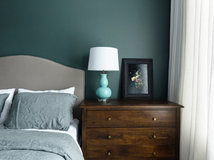




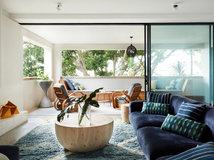
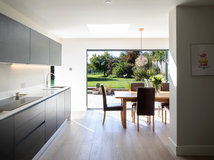

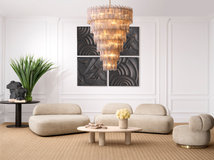


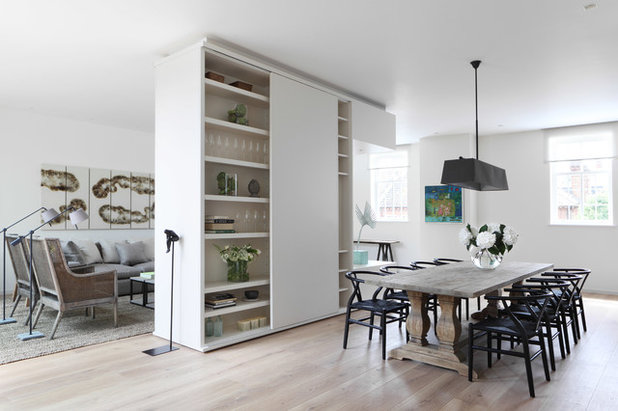
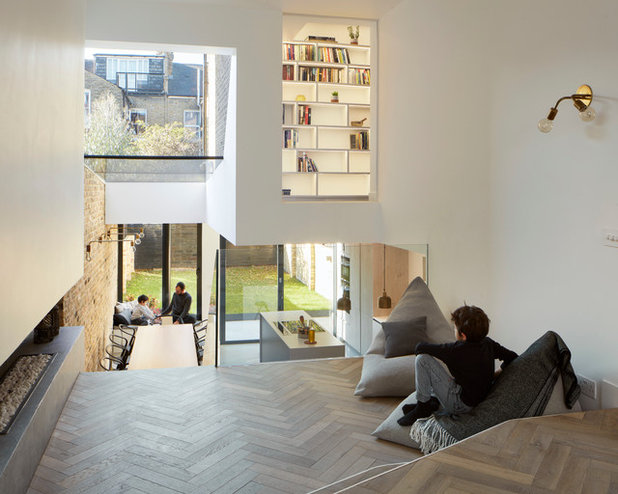
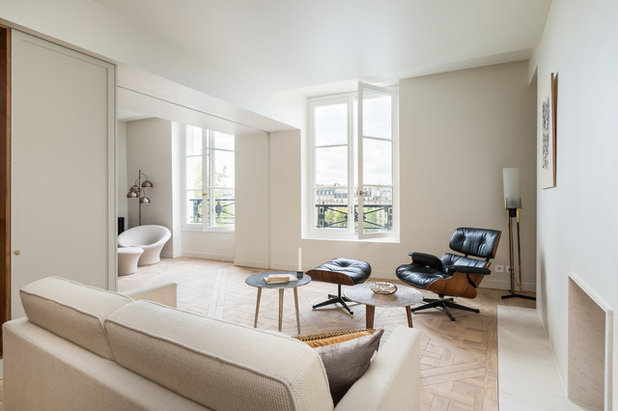
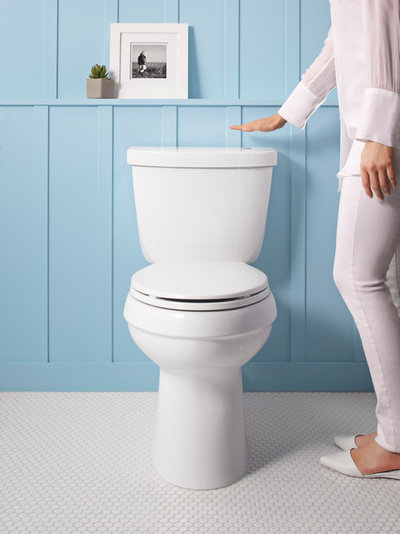
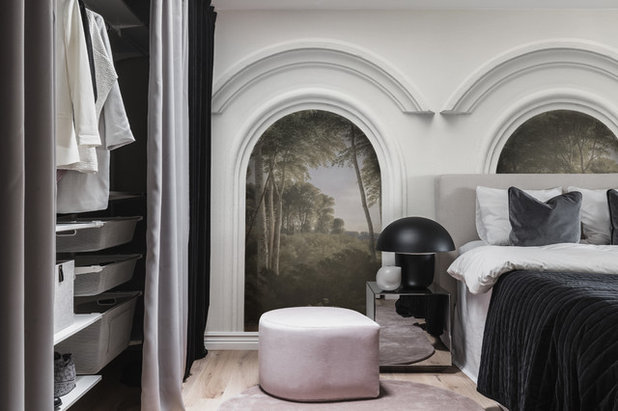

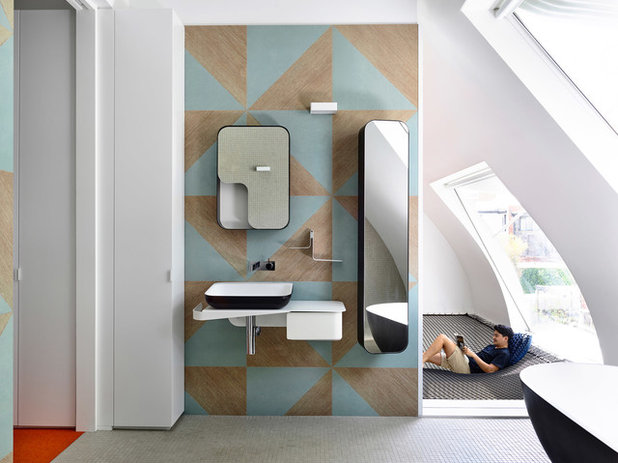
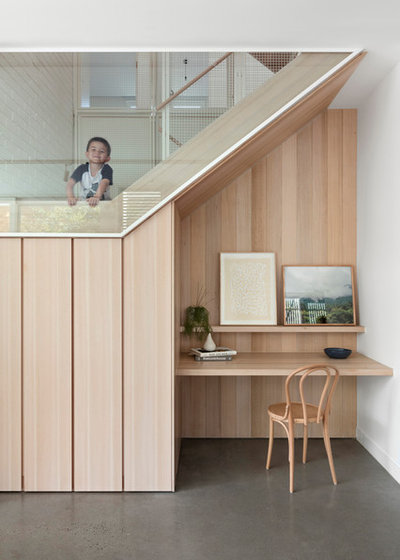
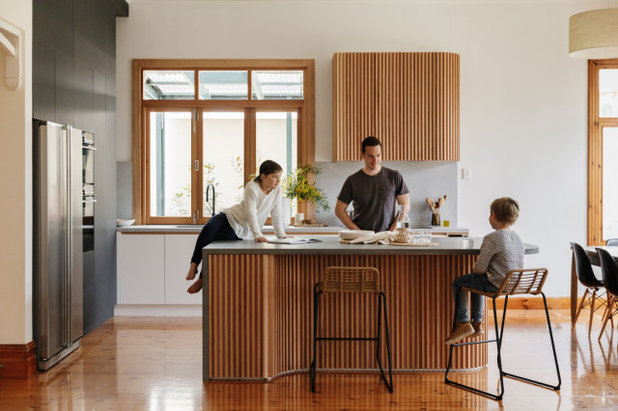
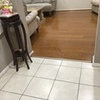
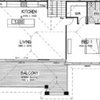
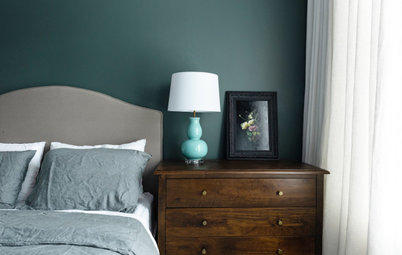

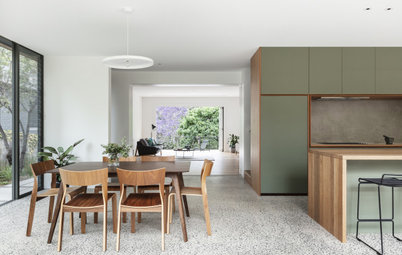

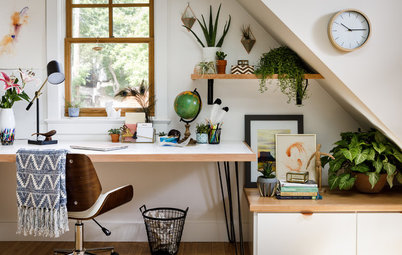

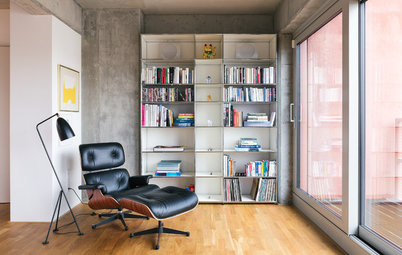
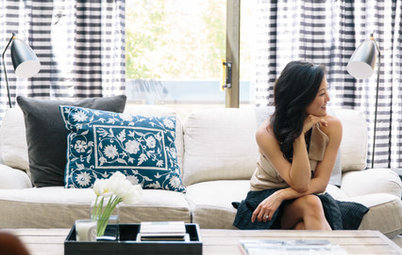
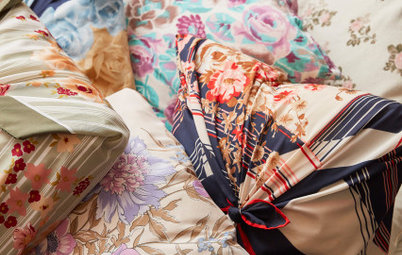
A basin near the entrance would add to overall hygiene.
As a consumer we added remote controlled clear bistro blinds to our back patio and added heating and cooling there as well during lockdown so that it is now an extra multipurpose garden room where we play table tennis, have meals, conduct zoom meetings, stop, relax and enjoy the garden etc. throughout the year. We are now sealing our garage, adding large windows to take in the garden and changing it from a large storage/junk space to a useable room as a private teen hangout with a foosball/pool table, sofa and table for sharing pizzas. We are changing the purpose of our spaces since covid, lockdowns, home learning and working from home and maximizing their utility. The biggest overall change for us is maximizing the spaces that we have to serve new functions and enhance air movement without having to do expensive and environmentally damaging renovations. We have also done some minor landscaping to better utilize our garden spaces. In terms of hygiene we are opening windows more than we used to. Having windows that open and spaces that can be opened up to the outdoors is even more important than before as we have learnt more about aerosol transmission of highly infectious viruses. We already had an air purifier due to pollen and dust allergies and bushfire smoke that travels to our city prior to covid. We already had a hands free hand washing as part of our toilet. It is a terrible shame that despite the greater awareness of hygiene Caroma no longer makes the toilet that includes the water saving hands free hand washing above the cistern due to lack of take up by consumers ! How can this be if this is the new direction in interior design? How slow are we in Australia in adapting to change?
Here we are spring 2022, and this still feels relevant. I’m glad for the updates we did while staying home and we’ve not gone back to racing out the door looking for distractions and activity.
We’ve made space to work and work out, and updated all sorts of things so we feel cozy, safe, and content.
The offices are zoom-friendly and attractive instead of just make-shift. Lighting is improved and floors refinished - it’s just nicer to be here. After 2 years now I am very grateful for the right amount of elbow room and a spa in the backyard and the resources to make it happen.